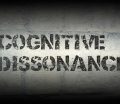
The Hidden Psychology Behind the “Stop Browsing” Moment
Why do some shoppers browse for hours without buying—while others make split-second purchases?
The digital marketplace has created a paradox: endless convenience paired with endless decision-making. As consumers scroll through product after product, something eventually happens that triggers them to either buy—or bounce.
Understanding the exact moment shoppers stop browsing is one of the most important insights a brand can leverage. This insight doesn’t just affect conversion—it impacts customer retention, brand loyalty, and long-term ROI.
At Golden Seller Inc., we help brands harness behavioral psychology and marketing science to decode consumer actions at every phase of the funnel. We’ll explore:
- The behavioral science behind online browsing
- What signals the end of the browsing phase
- Psychological triggers that lead to conversion or cart abandonment
- Strategies to influence shopper behavior in real-time
- How top brands optimize this critical inflection point
Let’s dive deep into the psychology of the “stop browsing” moment—and how you can use it to turn browsers into buyers.
The Nature of Browsing: Exploration, Evaluation, and Emotional Triggers
Online browsing is more than a product discovery phase—it’s a psychological experience. Each shopper arrives with a unique mix of emotions, intent levels, and cognitive behaviors.
Types of Browsing Behavior
- Goal-Oriented Browsing
These shoppers know what they want and are trying to find the best version of it—fast. They’re efficient, price-sensitive, and focused on decision-making. - Exploratory Browsing This is your classic “I’m just looking” behavior. Shoppers may not even realize they’re shopping. They might be killing time, passively interested, or waiting for inspiration to strike.
- Emotional or Escapist Browsing
Think of people scrolling through home décor or luxury items after a stressful day. They’re not necessarily intent on buying—they’re seeking a feeling. This is where impulse buys often originate.
Why Shoppers Don’t Stop Browsing: The Problem of Infinite Choice
Before we talk about when people stop browsing, it’s important to understand why they don’t.
Too many choices can lead to decision fatigue—a psychological state where people become overwhelmed and disengaged. In this state, two things typically happen:
- They delay the decision (“I’ll come back later”)
- They abandon the purchase entirely (“It’s too much, I’ll think about it”)
This “paralysis by analysis” is the enemy of conversion—and brands must design their funnels to interrupt it at the right time.
When Do Shoppers Actually Stop Browsing?
Let’s answer the central question: When do online shoppers stop browsing?
It typically happens when one or more of the following cognitive triggers is met:
1. Cognitive Closure
Cognitive closure is the psychological need to stop deliberating and make a decision. For many, the discomfort of not deciding becomes greater than the fear of making the wrong choice.
Trigger moment: When shoppers feel they’ve “done enough research” or are mentally fatigued, they are more likely to stop browsing and decide.
2. Perceived Value Outweighs Risk
When a product’s perceived value clearly outweighs the risk of purchasing it, shoppers will stop comparing.
Trigger moment: A compelling offer, trust signals (like reviews), or urgency triggers (like “only 2 left in stock”) can tip the scale.
3. Emotional Satisfaction Achieved
Some shoppers are browsing for emotional reasons—like inspiration or escape. They stop browsing when they feel a product “feels right.”
Trigger moment: Beautiful imagery, aspirational branding, or storytelling often seals the deal in these cases.
4. Time or Contextual Limitations
Sometimes shoppers stop browsing not by choice, but because they ran out of time.
Trigger moment: A meeting starts. The train arrives. The lunch break ends. If your brand didn’t capture attention fast enough, the session ends with no conversion.
5. External Validation Confirmed
Shoppers are constantly looking for external cues to feel confident in a decision.
Trigger moment: Seeing strong customer reviews, influencer testimonials, or a friend’s recommendation can instantly end the browsing phase.
The Role of Micro-Moments in Stopping the Scroll
Google coined the term micro-moments to describe intent-rich moments where decisions are made and preferences shaped.
In the context of browsing, these micro-moments are:
- I-want-to-know moments
- I-want-to-go moments
- I-want-to-do moments
- I-want-to-buy moments
When brands match messaging to these moments—especially the “I-want-to-buy” moment—they can effectively stop the browsing cycle and trigger purchase behavior.
Conversion Is an Emotional Event, Not a Logical One
Behavioral science shows that emotion leads, logic justifies.
People often think they’re browsing for logical reasons (like price, specs, or features), but most purchase decisions are emotional. Browsing stops when a product feels like the right choice, not necessarily when it checks every rational box.
Brands that appeal to core emotions like:
- Relief (finally found the right one)
- Belonging (others like me are using it)
- Excitement (this is exactly what I want!)
…tend to convert more frequently than those focusing purely on features or specs.
Common Reasons Shoppers Don’t Convert Even After Stopping
Sometimes, shoppers stop browsing—but still don’t buy. This is usually because of:
- Checkout friction: Too many steps, login required, poor mobile UX
- Shipping surprises: Unexpected fees kill momentum
- Doubt: Last-minute fear of making a bad decision
- Lack of urgency: No reason to “do it now”
These are fixable moments. Brands must reinforce emotional triggers with practical incentives—like limited-time offers, free returns, or trust badges.
How to Influence the Stop-Browsing Moment
Your job isn’t to force people to stop browsing. It’s to create an environment where stopping feels safe, satisfying, and smart.
Here’s how:
1. Design for Simplicity and Speed
- Use visual hierarchy to reduce overwhelm
- Show top-reviewed or bestsellers first
- Allow easy filtering and sorting to aid cognitive closure
2. Leverage Social Proof at Strategic Moments
- Place reviews, ratings, and real testimonials next to key CTAs
- Use “People also bought” recommendations that feel personalized
- Highlight the number of satisfied customers (“Over 100,000 sold!”)
3. Create Urgency Ethically
- Limited-time discounts
- Countdown timers
- “Only 3 left in stock” indicators
When done correctly, these trigger the shopper’s desire to close the loop.
4. Personalize the Journey
Behavioral triggers should adapt in real time. If someone has been on the site for 5+ minutes without clicking, offer a “Need help deciding?” popup.
Personalization strategies include:
- Abandoned cart recovery emails
- Smart product suggestions
- Dynamic CTAs based on browsing history
5. Minimize Post-Purchase Risk
Offer:
- Free shipping
- Easy returns
- “Try before you buy” or satisfaction guarantees
These reduce the fear of regret—the biggest block to clicking “Buy.”
Case Examples: Brands That Master the “Stop Browsing” Moment
Glossier
Glossier’s UX design, social proof, and minimal product lines guide customers to feel confident early. Browsers feel like they’re joining a movement—not just buying makeup.
Amazon
By showing “Amazon’s Choice,” best-seller tags, and side-by-side comparisons, Amazon drives cognitive closure quickly. Shoppers are subtly told, “This is probably your best choice.”
Warby Parker
Their at-home try-on program eliminates risk and creates emotional involvement. Browsing stops when shoppers see themselves in the product.
The Future: Predictive Browsing Interruption with AI
With machine learning and behavioral data, brands can now predict:
- When a customer is about to bounce
- When they’re hesitating at checkout
- When they’re stuck in endless comparison loops
AI-powered tools can automatically deploy nudges, chat support, or discounts just before a shopper leaves.
At Golden Seller Inc., we use behavioral data models to identify these micro-friction points—and build interventions that reduce churn and maximize conversions.
How We Can Help
At Golden Seller Inc., we don’t just run ads—we study behavior. As California’s highest-ranked digital marketing firm and one of the top 10 in the U.S., we specialize in psychology-driven marketing strategies that influence action at the right moment.
We help brands:
- Identify browsing patterns and friction points
- Apply behavioral science to UX and messaging
- Use emotional and psychological triggers to reduce drop-off
- Engineer personalized micro-moments that stop the scroll and drive conversions
Whether you want to increase checkout rates, reduce bounce rates, or turn passive scrollers into loyal customers, we’ll build a long-term strategy backed by data, neuroscience, and real human behavior.
Let’s make sure your audience stops scrolling—and starts converting. Book a free strategy session with Golden Seller Inc. today.








